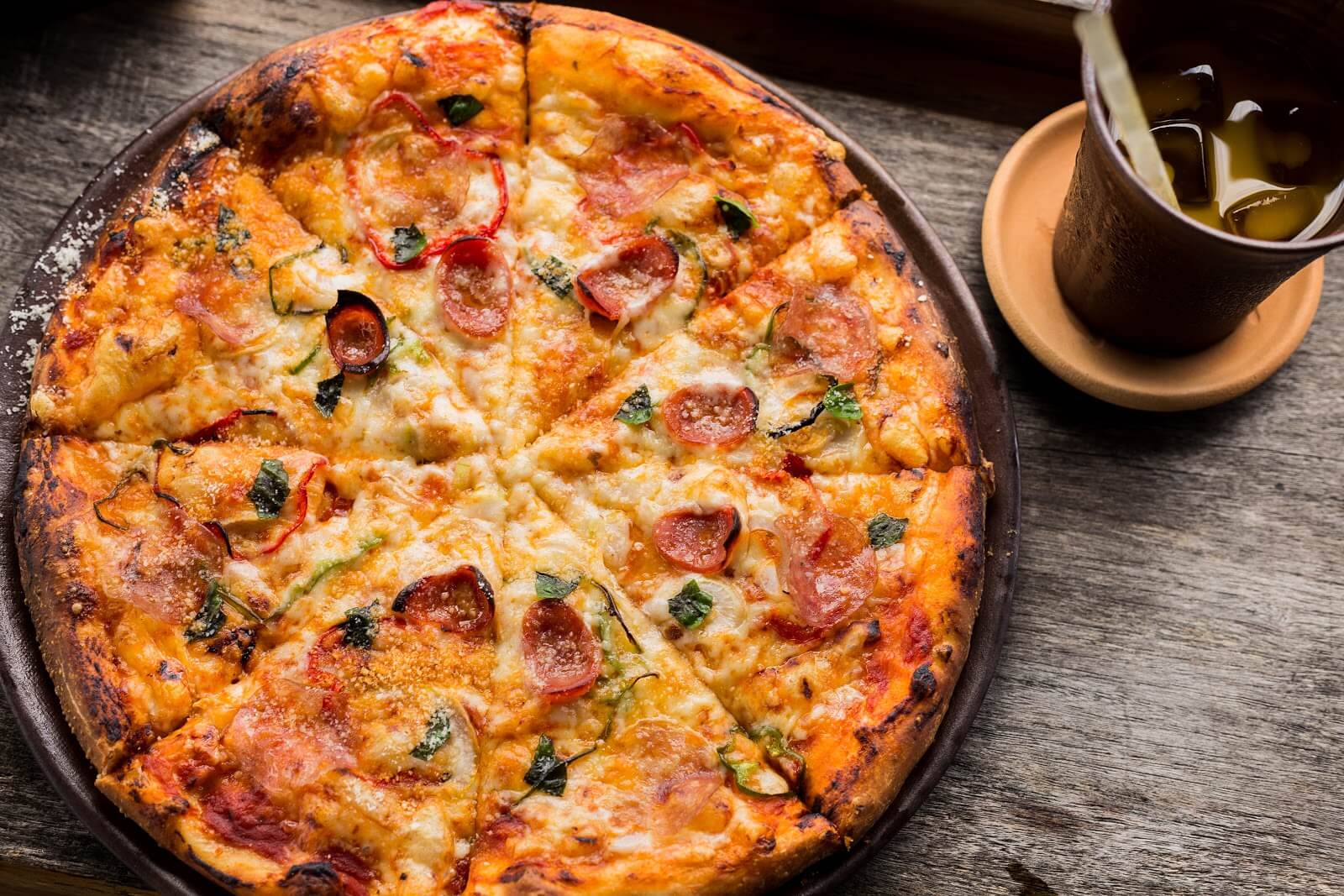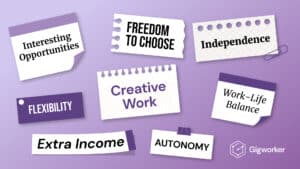When it comes to online food ordering, two of the biggest names in the game are Grubhub and Seamless.
What many people don’t know, however, is that the two companies merged in 2013.
They now operate independently but also as one.
They’re two standalone apps that provide the same service: Getting delivery orders from local restaurants to hungry diners via an online platform.
In this article we’ll look at the merger of the two companies, provide context for the merger and dive briefly into the details, and explain the difference between the two apps.
Finally, we’ll look at how Grubhub and Seamless compare to competitors, and answer some frequently asked questions.
A Brief Guide to Seamless and Grubhub
Grubhub and Seamless are both online ordering platforms that provide food delivery service.

Their user interface is essentially identical, and they share restaurant partnerships, so any food available on Grubhub will also be available on Seamless.
The apps work by allowing users to browse menus of local restaurants, then order food and pay securely through the app via credit card, Google Wallet, or Apple Pay.
Once ordered, they can then track their food as it’s prepared and then handed off to a delivery person.
The apps also provide real-time GPS tracking of their delivery drivers, so users can watch as their food travels directly to their door.
Seamless and Grubhub stress strong customer service and have put an emphasis on making sure its workforce is paid fairly.
Each order comes with a pre-set tip for the delivery driver, which can be changed by the user, but is strongly encouraged by the company.
Drivers keep 100 percent of tips and are given a fee for every order completed.
Depending on local laws, some drivers are also guaranteed base pay, no matter how many deliveries are completed.
History and How the Merger Happened
Seamless was founded in 1999 by Jason Finger, Paul Appelbaum, and Andy Appelbaum and was originally called SeamlessWeb.
It began as more of an online business catering company, allowing companies to order food for their workforce through an online portal.
The company quickly grew and began focusing more on individual online delivery orders, and in 2006 was acquired by Aramark.
In 2011, however, the company was given a major investment and then spun off into its own independent entity.
Also at that time, the company changed its name to Seamless.
Grubhub was founded in 2004 by Matthew Maloney and Michael Evans and was initially pitched as a company that would offer an alternative to paper menus for restaurants.
They quickly pivoted to delivery service, and started rapidly growing their user base.
In 2013, the two companies merged, allowing them to share technology, plus rapidly grow both their user base and their regional coverage.
The company was first called Grubhub Seamless, but then re-branded the parent company as Grubhub, Inc.
Via the press release at the time:
“We are excited to combine the strengths of these two dynamic organizations in an industry that is rapidly gaining traction.
We believe the merger will enhance the products we are able to offer both our diners and restaurants,” said Matt Maloney, GrubHub co-founder and CEO.
“GrubHub and Seamless share a common goal to generate more business for local takeout restaurants while providing the best possible service to diners.
By combining our complementary restaurant and diner networks, we are well positioned for continued growth in a massive market.”
The merged company, headquartered in Chicago, has remained aggressive in acquiring competitors.
Companies such as AllMenus, MenuPages, Eat24, LevelUp, and Tapingo are all part of the family of online ordering companies.
Grubhub, Inc.’s acquisition and merger strategy has allowed the company to enter and immediately have an impact in the competitive markets of New York City, San Francisco, Los Angeles, and London.
Company Statistics
Grubhub, Inc. is one of the major players in online restaurant delivery.
The company boasts, as of 2018:
- 85,000 American restaurant partners
- Over $1 billion in revenue
- 2,125 employees
In 2019, the company announced that gross food sales grew 21% year-over-year to $1.4 billion.
Grubhub, Inc. is a public company, traded on the New York Stock Exchange (NYSE) as GRUB.
Understanding the Differences Between the Two Apps
From a user experience, there is very little difference between Seamless and Grubhub.
Outside of the use of the different logos, the apps and marketing materials are all but identical.
From an operational perspective, same thing.
Restaurant partners, delivery drivers, and special deals are all shared by the two apps in every city.
Every Seamless driver is also a Grubhub driver, and every Seamless restaurant is also a Grubhub restaurant.
From a practical perspective, there’s really no reason to worry about it, other than not needing both apps on your phone if you like ordering food.
If you’ve got Seamless, you’ve got Grubhub.
No need to download the other one.
How Grubhub and Seamless Compare to Competitors
The mobile food ordering space is a competitive one, with lots of delivery companies offering slightly different services and using slightly different business models.
The main differences in each of the companies are in regard to:
- Fees
- Who sets those fees
- Tipping policy
- Services provided
Here are some of the main competitors and how they function:
Uber Eats
Uber Eats provides delivery service like Grubhub and Seamless.
Unlike them, Uber Eats sets the delivery fee (called a booking fee), while Grubhub and Seamless let restaurants set the delivery fee.
Uber Eats lets users tip, but it isn’t automatically set to tip like with Grubhub and Seamless.
Yelp
While Grubhub and Seamless utilize user reviews, Yelp’s entire business model is built on collecting reviews for smarter dining.
They do offer savings and coupons, but don’t offer delivery service.
DoorDash
DoorDash operates similarly to Grubhub and Seamless, and delivery fees are similar, though DoorDash does offer a $9.99 monthly DashPass which allows users to get unlimited delivery with no delivery fees.
Caviar
Caviar partners with higher-end restaurants and allows those restaurants a bit more control over the delivery service.
Restaurants can pause delivery if they get busy, cancel certain items, and generally are given more freedom to dictate when and how delivery is provided.
Postmates
Postmates operates much like Grubhub and Seamless, but doesn’t require that the business they deliver from is a partner.
You can ask Postmates to pick up anything from anywhere locally, from a hammer at the hardware store to a pint of ice cream from the cozy diner across town.
Fees tend to be higher when ordering outside of Postmates partners, however.
Frequently Asked Questions
We’ve gone over the merger, how the two companies function as one, and compared their service to some competitors.
Here are some questions you might still have:
1. If they’re identical, why do they still function as two apps?
Grubhub and Seamless continue to offer the two apps because users have gotten used to using one and the company doesn’t want to have to ask people to set up another app.
If someone is comfortable with one app, might as well keep using one.
From an operational standpoint, the two services are identical, but they’ve built two strong brands and might as well let them thrive.
2. Why is Seamless more popular in some cities and Grubhub in others?
It really is about which grew quickly in that market, and what customers are used to there.
Seamless has a stronger presence in Manhattan because it was launched there early, while Grubhub has a strong presence in Chicago because the company is headquartered there.
3. If I have a corporate account with Seamless, will it also work with Grubhub?
Yes, but it might require some help from customer service.
If you’ve set up a corporate ordering account with one app, it’s simpler to stay within that interface.
As there’s no difference between the two services, there’s no real reason to switch.
Understanding Seamless and Grubhub
Seamless and Grubhub are two great services for people who love online food delivery.
The two companies merged to push their coverage and user base, and allowed them to partner with even more restaurants across the country and more so, the world.
Understanding how the two came together and continue to operate will allow you to enjoy their service more.
Now you can avoid having two apps on your phone when they both provide identical service.









